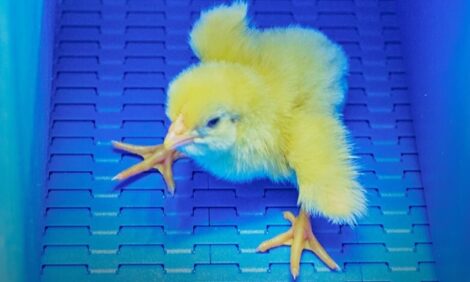



The case for chick sexing in broiler production
Automation: The new backbone of poultry processingWith the poultry industry’s strong growth trajectory, market leaders are increasingly focusing on optimizing each stage of production. For meaningful progress, it’s vital to consider how strategic decisions in one segment can resonate positively throughout the value chain. Incorporating day-old chick sexing into a broiler production operation is one such decision.
Sorting chicks by their sex is common practice within the industry, with different breeds and methods more suitable to an operation dependent on its end product. In broiler production, hatcheries serve as a vital link in the overall journey to market. Accurately and efficiently identifying bird sex early in the production cycle allows the implementation of tailored feeding strategies, improved welfare, optimized growth and uniformity further down the line – with benefits primarily materializing at the plant.
Automation: The new backbone of poultry processing
Automation has become a fundamental part of broiler production, with processing plants increasingly relying on robotics and artificial intelligence (AI) driven systems for critical operations. These technologies go beyond simply replacing manual labor; they optimize efficiency across primary, secondary, and further processing, leading to improved product quality and plant efficiency. However, inconsistencies in bird weights and sizes can impact their performance.
In primary processing, where scalding, feather removal, and evisceration are automated, size inconsistencies create challenges. Smaller birds may be over-scalded or damaged, while larger birds might not be fully processed, resulting in inefficiencies and product loss.
Secondary processing stages, including chilling, deboning, cut-up, and portioning, require precise automation. Machines calibrated for specific bird sizes struggle with variations, leading to improper cuts, increased waste, and reduced yields.
Taking measures earlier in the production cycle by separating chicks by sex – and automating that process at the hatchery – can significantly improve efficiency across the value chain, right from the start. By minimizing variability, producers can deliver more uniform flocks to the plant, enhancing product quality, reducing waste, and maximizing profitability.
Uniformity: The key to broiler production
Separating broiler chicks by sex and growing males and females separately is key to achieving uniformity, offering substantial advantages to producers. In straight-run flocks grown to 6 pounds, weight variability is high due to the faster growth rates of males compared to females. However, with sexed birds, 20% more broilers meet the 6 pound target weight within a 10% margin.
The increased uniformity is achieved through tailored management programs that address the specific nutritional needs of each sex, reducing competition for resources like feed and water. This leads to consistent growth and improved flock health. Additionally, separate rearing optimizes space management and reduces stress, enhancing animal welfare.
This uniformity established at the farm through chick sexing significantly impacts downstream processing, where consistent bird sizes streamline automated systems, reducing inefficiencies and waste. For those not yet sexing, adopting this practice can significantly enhance efficiency and profitability throughout the production chain. Modern automated feather sexing systems like TARGAN's WingScan™ establish uniformity from the start, paving the way for increased efficiency and profitability.
WingScan™ BY TARGAN
Launched in 2023, TARGAN’s WingScan system revolutionizes sex identification at hatcheries using advanced vision systems and AI algorithms to sex and sort day-old chicks. By automating sexing, WingScan is unlocking downstream value for poultry producers at the farms and plants.
For more information, go to www.targan.com/wingscan.









